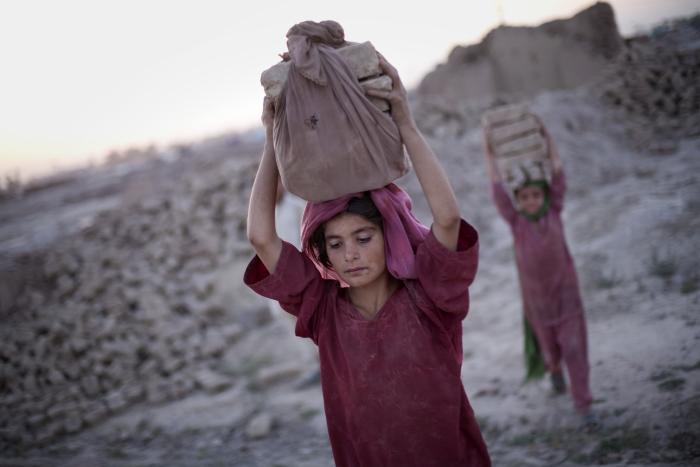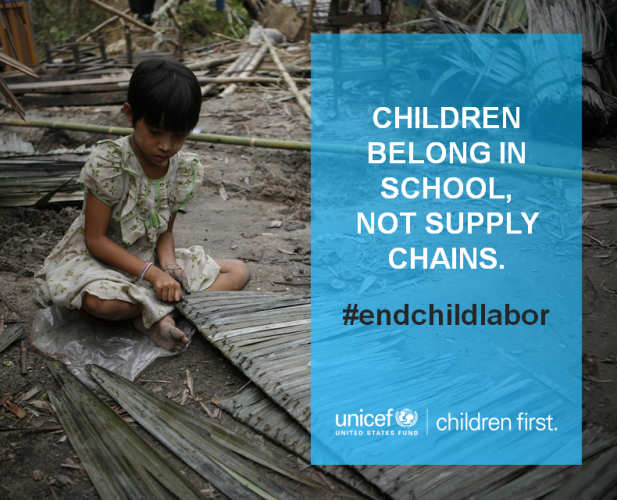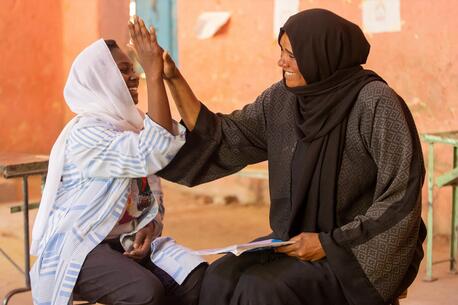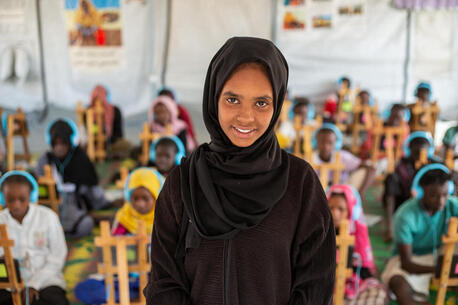End Child Labor in Supply Chains: It's Everyone's Business
To recognize World Day Against Child Labor, observed every year on June 12th, the End Trafficking project partnered with UNICEF and the International Labor Organization (ILO) to host a panel discussion at UNICEF Headquarters. Featuring leaders in government, business, and nonprofit, the panel brought together a diverse range of stakeholders to highlight the solutions and discuss the challenges in ending child labor in supply chains.
World Day Against Child Labor is a day to acknowledge that 168 million children live as child laborers around the world.
Approximately half of them, some 85 million, are trapped in hazardous work, while a wide percentage are also victims of child trafficking.
Child labor harms the physical, social and psychological development of a child and denies children their right to an education, their right to security, and often their right to be protected from violence and abuse. At the macro level, child labor reinforces intergenerational cycles of poverty, stunts the growth of national economies, and taints global and domestic supply chains.
Therefore, it is not enough to simply acknowledge that child labor still exists today. Ending child labor is everyone’s business. Governments, corporations, workers and consumers all play a role in preventing and ending child labor in supply chains. That is why, on June 9th, the U.S. Fund for UNICEF partnered with UNICEF and the International Labor Organization (ILO) to host a solutions-oriented dialogue among corporate and nonprofit leaders to discuss key steps in ending child labor.
The panel featured (from left to right) Michelle Nagar from Starwood Hotels & Resorts Worldwide, Lisa Davis from IKEA North America, Nina Smith from GoodWeave, Anita Sheth from Fairtrade International, Sonia Mistry from Solidarity Center, and Joost Kooijmans from UNICEF Child Protection. The panel was moderated by Kevin Cassidy from the International Labor Organization. In addition, the event featured two introductory speakers: Ambassador Martin Garcia Moritan, the Permanent Representative for Argentina to the UN and Peter Robinson from the USA Council for International Business. Hannah Gould from the End Trafficking project offered the opening and closing remarks.
UNICEF’s Joost Kooijmans opened the discussion by giving an overview of child labor and highlighting the importance of addressing the root causes, such as poverty, inequality, conflict, and discrimination that drive child labor. He acknowledged that the global prevalence of child labor has decreased by thirty percent since 2000, but current trends estimate 100 million children will still be exploited in child labor by 2020.
In discussing how we might accelerate progress, Kooijmans said, “With partnerships, we can make more change. Everyone must join in.”
Panelists emphasized the importance of collaboration and multi-sector partnerships to address the issue of child labor from all angles. Governments should work with agencies such as ILO and UNICEF to create and enforce international standards against child labor, and with corporations to develop intersectional solutions that work at the community level.
In addition, the elimination of child labor in supply chains requires international cooperation to meet the new 2030 global agenda, the Sustainable Development Goals (SDGs).
The panel discussion gathered together over one hundred attendees.
All panelists agreed that a rights based-approach should be at the center of business models and corporate social responsibility policies. Lisa Davis from IKEA North America urged all stakeholders in business, including employees, to consider human rights in every decision, at every stage of the supply chain.
With human rights in mind, businesses have a responsibility to not just acknowledge and report when children’s rights are being abused, but to “act to protect” and remediate situations of exploitation. For example, when child labor is identified through a certain supplier, corporations should not just “cut and run,” but actually set up policies to ensure children do not move on to be exploited somewhere else.

But how do we work top-down to incentivize corporations to invest in sustainability and human rights? Panelists highlighted that governments play an important role in developing regulatory frameworks, while external agencies can help develop guides for employers to understand the social and economic impacts of child labor. Nina Smith, Executive Director of GoodWeave, stressed the importance of working at the community level to address harmful social practices that devalue education and reinforce exploitation. In addition, it is important to identify the informal labor markets that occur beyond the factory level because a large proportion of exploitative child labor goes unmonitored and unaddressed.
Anita Sheth from Fairtrade International addressed another key player in the fight to end child labor: consumers. She pointed out that child labor is not an emotional issue, but a trade issue and that we must change the global narrative around child labor by engaging the rights of consumers.
The discussion reinforced the importance of collaboration and multi-sector partnerships to work from the top-down and bottom-up to end child labor.
Governments, corporations, and workers should use a rights-based approach to conducting business and trade, while consumers must also use their purchasing power to demand products free from child labor. To make significant strides toward achieving the Sustainable Development Goals, the public and private sectors must prioritize human rights and address the root causes of child labor.

As we reflect on World Day Against Child Labor, let us remember that we all have a role to play in protecting children. We know that communities thrive, businesses succeed, and economies grow when children are in schools, not supply chains. And we know that if we all work together to put children first, we can achieve a future without child labor. Take action today!
Go toSlaveryFootprint.org to learn your connection to child labor and modern-day slavery and write to your favorite brands to ask for stronger policies against child and forced labor.
Be a more conscious consumer by purchasingFairtrade certified products. Fairtrade offers consumers a powerful way to reduce poverty, protect children, and end exploitation in supply chains.
Listen to our “Vote with Your Dollar” episode of our free “Ending Human Trafficking Globally and Locally” podcast.
Learn more about the Children’s Rights and Business Principles created by UNICEF.


